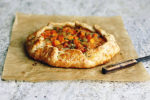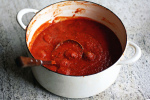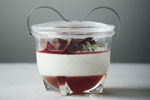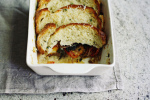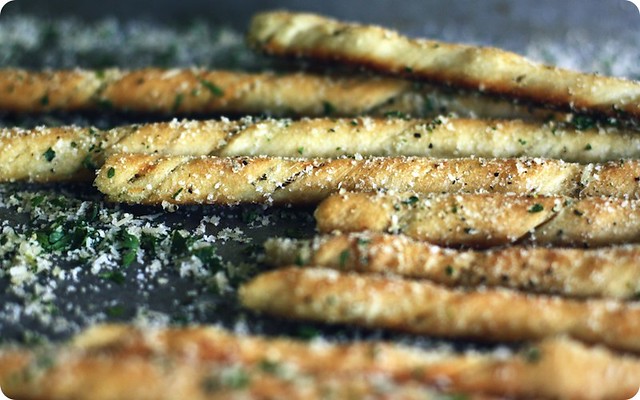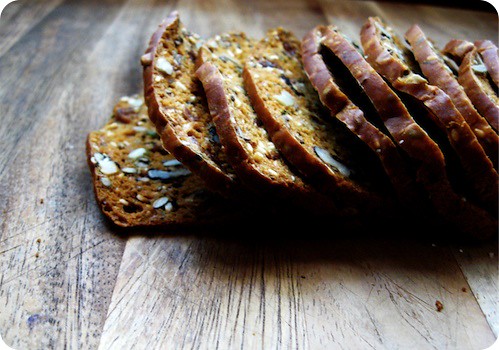Good to go
 Sunday, July 4, 2010 at 10:11PM
Sunday, July 4, 2010 at 10:11PM At 10:54 or so on Wednesday night, I started thinking about crackers. The thought was so engrossing, the interest so strong, that it took no more than three seconds after the notion entered my mind for me to say to the friend with whom I was chatting "I would really like some crackers."
I am a riveting conversationalist.
There were no crackers in the pantry, so to satisfy my desire would mean productivity on my part. Good sense and laziness thankfully won the day, and I managed to leave the kitchen neat and tidy that night.
In a stunning display of restraint, I held off until the morning. And thus, at 7:15 a.m. on Thursday a bowl of dough, dusted in flour and proofing quietly, rising and puffing proudly, resided on our counter. By noon, there would be Garlic Herb Bread Twists.
Please don't look at me like a crazy person, I know full well that a stick of bread may not be a cracker, per se, but they met our requirements with ease. I wasn't aiming for a crackers-and-cheese cracker, not a shingle demoted to the role of vehicle for something else. I wanted salt, crunch, a snack on its own that required no further accessory.
These fit the bill.
All they take is pizza dough, bought or homemade, laminated with parmesan, rosemary and thyme, salt and pepper. Cut and twirled into curling lengths, they receive a brush of garlic oil before they're into the oven. A second anointing as they come out of the heat, in my version the oil is cut with honey, and then a toss through a mix of Parmesan and parsley. Thoroughly coated, utterly habit-forming, they're good to go.
I like the ones with some relative heft - their crust has a pleasing substance, and through the middle the crumb is spongy and dense for a satisfying chew. However, Sean prefers those stretched thin and allowed to crisp, so their crunch is not only at the edge but remains right on though. The one for him are the ones down below, gnarled and uneven, thoroughly golden and pleasurably snappy.
Eight hours is what it took from impulse to the making of these cracker-ish sticks, three hours from start to munching, and less than an afternoon for them to be gone. A pretty neat little timeline I'd say. In the name of efficiency, however, I think next time I won't bother waiting and set about making them right the very minute the craving strikes.
And strike it will, to be sure. Patience may be a virtue, but snacks are a necessity.
Garlic Herb Bread Sticks
From Gourmet Magazine, July 2009. Since I have made changes to the ingredients and method, I've rewritten the recipe for ease. To bring further depth to the garlic oil, the garlic is steeped in warm oil to rid it of any harsh bite. I've also added a pour of honey, to round out and soften the piquancy of the cheese and garlic.
Ingredients
1 tablespoon chopped fresh rosemary
1 tablespoon chopped fresh thyme
1 cup grated Parmigiano-Reggiano (2 ounces), divided
1 clove garlic, minced
1/4 cup olive oil
3 garlic cloves, minced
2 lb pizza dough, (or use store-bought)
A generous teaspoon honey
1/4 cup finely chopped flat-leaf parsley
Salt and freshly-ground black pepper
Preheat oven to 400°F (200°C), with racks in the upper and lower thirds. Line two baking sheets with parchment paper, and set aside.
In a small bowl, stir together rosemary, thyme, 1/4 cup cheese, 1/2 teaspoon salt and 1/4 teaspoon pepper.
In a small saucepan, stir together the olive oil and garlic. Place the pan over medium heat, and warm gently until the garlic starts to become fragrant. Do not cook the garlic or let it sizzle. Remove from the heat, stir in 1/4 teaspoon salt and 1/4 teaspoon pepper and set aside to cool.
Divide the dough in half, covering one portion with a tea towel (not terry cloth). On a lightly-floured work surface and with a floured pin, roll out second portion to a rough rectangle measuring 15- by 10-inches.
Sprinkle half the herb mixture over the lower (crosswise) half of the dough. Fold the dough towards you, bringing the two top corners to the bottom, sealing in the herbs. Roll gently to bring the envelope of dough to a 10- by 8-inch rectangle. Using a knife or pizza wheel, cut the dough lengthways into 9 strips, each less than 1-inch in width. Twist each strip, turning from both ends, and place on one of the prepared baking sheets, each strip about 1 inch apart. Brush the strips with garlic oil, using 1 tablespoon divided amongst the 9. Set aside.
Repeat process, rolling out the reserved dough, sprinkling with the remaining herbs and cheese mixture, rolling again, cutting and shaping. Arrange these strips on the other baking sheet, and brush them with 1 tablespoon of oil divided between them. Set aside for 5 minutes.
Bake the twists in the preheated oven, rotating pans and switching positions halfway through, until golden brown and crisp. This should take between 20-25 minutes.
While the breadsticks bake, stir the honey into the remaining garlic oil. Sprinkle the remaining 3/4 cup cheese on a shallow baking pan along with the parsley.
When the breadsticks are done and still hot, brush lightly with the oil and honey. Immediately roll them in the cheese and parsley, until well coated. Serve warm or at room temperature.
Makes 18.
 Gourmet magazine,
Gourmet magazine,  bread,
bread,  crackers,
crackers,  snack
snack 

